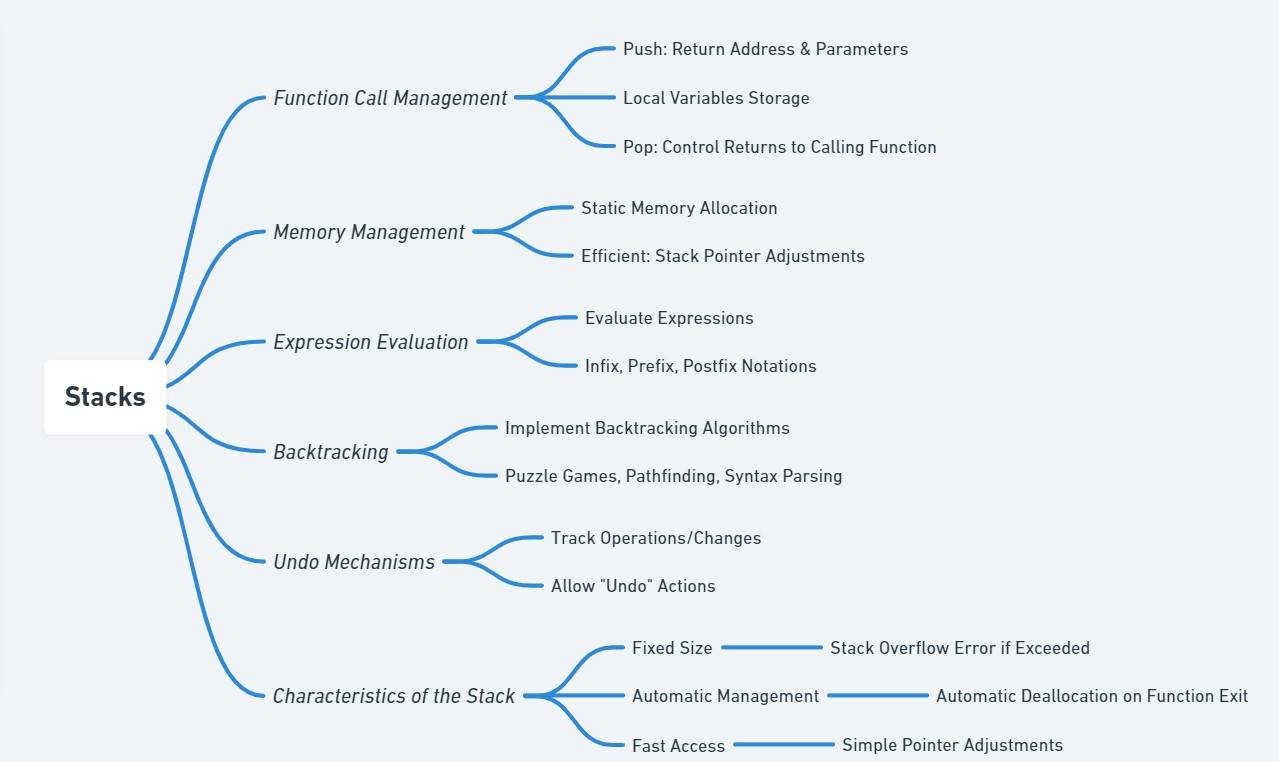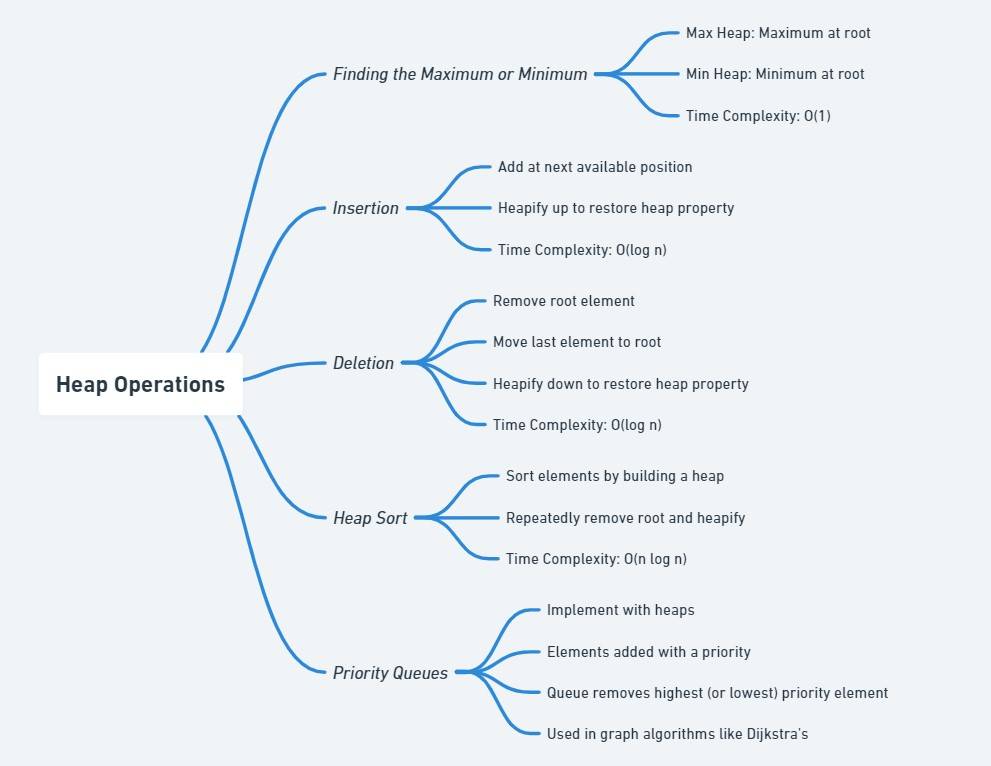Difference Between Stack and Heap
Have you ever wondered about the difference between heap and stack memory? The stack manages function calls and local variables automatically in sequential order, while the heap allows for dynamic memory allocation for data with extended lifespans but requires manual management. Let's understand more!
The stack is a region of memory that stores variables created by each function (including the main function) during its execution. On the other hand, a heap is a region of memory used for dynamic memory allocation, where blocks of memory are allocated and released in an arbitrary order. In this blog, we will understand the differences between them in detail!
Check out Data Structures and Algorithm courses here!
Table of Content
Best-suited Data Structures and Algorithms courses for you
Learn Data Structures and Algorithms with these high-rated online courses
Difference Between Stack and Heap
Below is a table of differences between stack and heap.
| Feature |
Stack |
Heap |
| Memory Management |
Automatically managed by the CPU. Memory is allocated and deallocated as functions are called and return. |
Memory must be manually managed. Programmers allocate and free memory as needed. |
| Allocation and Deallocation |
Fast because it involves moving the stack pointer. |
Slower because it involves finding a free block of memory of sufficient size. |
| Lifespan |
Memory on the stack is only available within the scope in which it is defined. |
Memory in the heap remains allocated until it is explicitly freed or the program ends. |
| Size |
The size of the stack is determined at the start of the program and can be limited, leading to stack overflow if too much stack memory is used. |
The heap can dynamically grow and shrink at runtime, limited by the size of the virtual memory or the physical memory available, leading to fragmentation. |
| Usage |
Used for static memory allocation. Ideal for temporary variables or data that is not required to exist outside the scope of a function call. |
Used for dynamic memory allocation. Ideal for objects or data structures whose size may change at runtime or whose lifetime must extend beyond the scope in which they were created. |
| Access Time |
Faster access compared to heap because of its LIFO (Last In, First Out) nature. |
Slower access due to pointers and possible memory fragmentation. |
| Storage of |
Local variables, function parameters, return addresses. |
Objects, arrays, or any large data structure that needs to persist beyond the execution of a single function. |
| Safety |
Considered safer because it avoids pointer-related errors and memory leaks by automating memory management. |
Less safe, as improper allocation and deallocation can lead to memory leaks, dangling pointers, or corruption. |
What is Stack?
Stack is a data structure that operates in a Last In, First Out (LIFO) manner. This means that the last element added to the stack will be the first one to be removed.
Uses and characteristics of a stack:
What is Heap?
A heap is a specialized tree-based data structure that satisfies the heap property: in a max heap, for any given node C, if P is a parent node of C, then the key (the value) of P is greater than or equal to the key of C. In a min heap, the key of P is less than or equal to the key of C. The node at the "top" of the heap (with no parents) is called the root node.
The heap is different from a binary search tree (BST) in that the ordering between sibling nodes is not fixed, and its shape is always a complete binary tree. This means all levels of the tree are fully filled except possibly the last level, which is filled from left to right.
These properties make the heap efficient for a variety of operations, including the following:
Similarities Between Stack and Heap
Below is a table highlighting the similarities between stack and heap.
| Feature |
Stack & Heap |
| Type of Memory |
Both are types of dynamic memory used during a program's execution. |
| Usage in Programs |
Both are utilized by programs to manage and allocate memory for various operations and data storage needs. |
| Accessed During |
Both are accessed by programs and functions during their execution for storing and managing data. |
| Management Necessity |
Both require some form of management, whether automatic (stack) or manual (heap), to efficiently utilize memory resources. |
Thus, the distinction between heap and stack memory is a basic concept in computer science, particularly in the context of memory management within programming. Understanding these differences not only helps in efficient programming but also in optimizing application performance and avoiding common errors like memory leaks or stack overflows.




FAQs
What are the main differences between stack and heap memory?
The main differences between stack and heap memory lie in their management, speed of allocation, lifespan of stored data, and usage:
- Management: Stack memory is automatically managed by the operating system or runtime environment, while heap memory requires manual management by the programmer or automatic management by garbage collectors in some languages.
- Allocation Speed: Stack memory allocation is typically faster than heap memory allocation because it involves adjusting a stack pointer, whereas heap allocation requires searching for a sufficiently large block of free memory.
- Lifespan: The lifespan of data on the stack is limited to the block of code (such as a function) in which it is defined. In contrast, heap memory can persist for the duration of the application's runtime.
- Usage: Stack memory is used for static memory allocation, such as local variables within functions. Heap memory is used for dynamic memory allocation, suitable for objects or data whose size might change at runtime or whose lifetime exceeds the scope of a single function call.
Why is stack memory considered faster than heap memory?
Stack memory is considered faster than heap memory primarily because of its allocation and deallocation mechanism. In stack memory, allocation and dealallocation are carried out by simply moving the stack pointer up or down, which is a very efficient operation. This process is much quicker than heap memory allocation, which involves finding a block of memory of sufficient size, a process that can become increasingly complex as the memory becomes fragmented over time. The simplicity and efficiency of stack allocation make it faster, but it also comes with size limitations and scope restrictions.
Can data allocated on the heap be accessed globally across the application?
Yes, data allocated on the heap can be accessed globally across the application. Unlike stack memory, which is local to the function in which it is defined, heap memory is not tied to a specific function or block of code. Once allocated, heap memory can be accessed by any part of the program, as long as a reference or pointer to the heap-allocated memory is available. This makes heap memory suitable for data that needs to be shared across different parts of the application or for objects whose lifetime extends beyond the execution of a single function or block of code.





